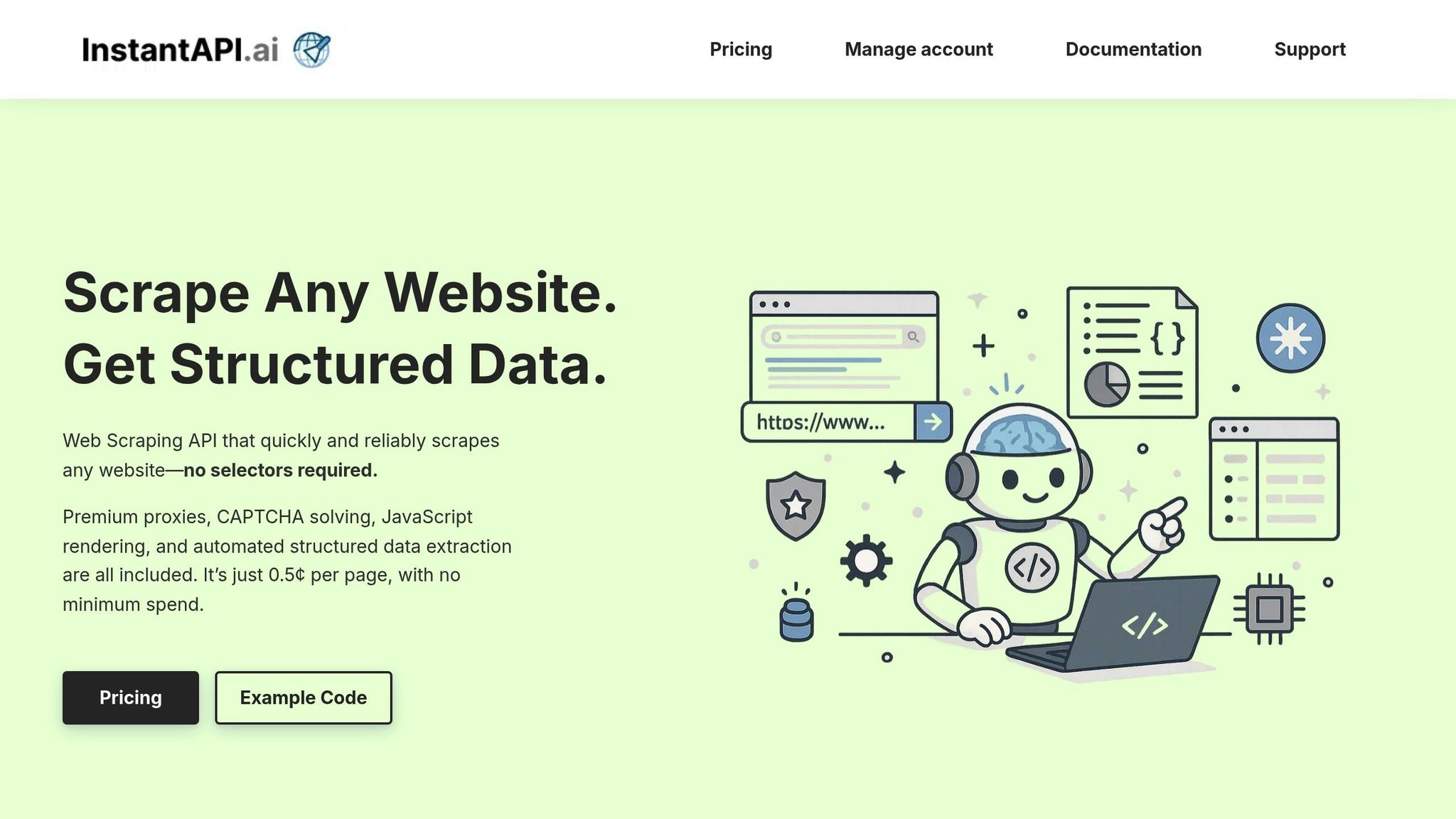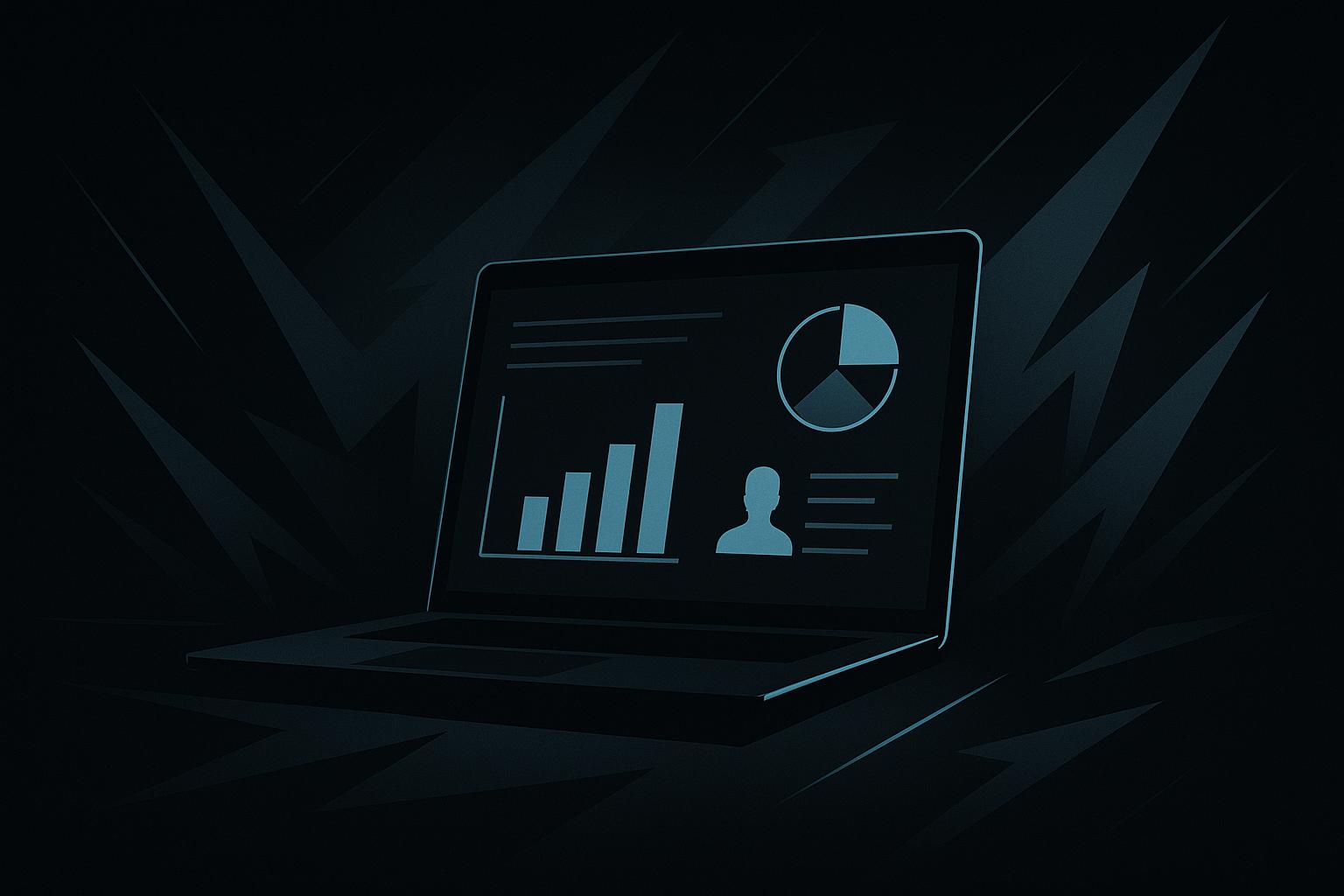Web scraping is transforming how schools and universities collect and use data. By automating data gathering, institutions can save time, reduce costs, and access up-to-date information for decision-making. Here's why it matters:
- Boost Research: Automate data collection from academic platforms to track trends, citations, and research impact.
- Improve Course Planning: Analyze job market trends and competitor offerings to design relevant programs.
- Enhance Recruitment: Use data to target potential students and refine marketing strategies.
- Stay Competitive: Monitor tuition rates, online education trends, and market strategies.
With tools like InstantAPI.ai, institutions can efficiently gather large datasets while following legal and ethical guidelines, such as FERPA and GDPR compliance. This ensures data is collected responsibly and securely, supporting better outcomes for students and educators alike.
Build a Web Scraper with Cursor: Master Basic AI Code ...
Web Scraping Advantages in Education
Educational institutions are increasingly using web scraping tools to gather data efficiently and make informed decisions. Here's how this technology is making an impact in education:
Lowering Data Collection Costs
By automating the data collection process, web scraping reduces the need for manual work. This not only cuts labor costs but also frees up resources for deeper research and analysis. Plus, it speeds up the process, making it easier to handle large volumes of data accurately.
Access to Up-to-Date Information
Staying informed is crucial in education. Web scraping helps institutions continuously track online resources such as course catalogs, academic papers, policy changes, and job market trends. This ensures that educators and administrators have the latest data to address challenges and seize opportunities as they arise.
Managing Large Data Volumes
Educational research often requires analyzing massive datasets from various sources. Web scraping simplifies this by automating the collection and organization of data, whether it’s scholarly articles or student performance metrics. This makes it easier to compare curriculum outcomes, study trends, and draw insights across different educational environments.
Web Scraping Uses in Education
Educational institutions rely on web scraping to address specific needs and enhance their operations in various areas.
Research and Trend Tracking
Universities and colleges automate data collection from platforms like JSTOR, ProQuest, EBSCO, ResearchGate, and Google Scholar. This helps them uncover trends, track citations, and explore collaboration or funding opportunities. For instance, scraping academic repositories allows institutions to:
- Track citation patterns and research impact
- Stay updated on emerging topics
- Spot potential collaborators
- Examine funding trends
Web scraping also plays a role in shaping curricula by highlighting industry demands and certification trends.
Course Planning
Data-driven course planning is another area where web scraping proves helpful. By analyzing data, institutions can:
- Understand industry skill demands
- Monitor employment trends
- Review competitor course offerings
- Evaluate certification requirements
For example, a university revamped its computer science program by analyzing job board data, which led to higher graduate employability and increased enrollment.
Student Recruitment
Web scraping helps schools refine their recruitment strategies by:
- Identifying potential student demographics
- Analyzing social media to gauge student interests
- Tracking enrollment patterns
This insight allows institutions to craft targeted marketing messages and connect with prospective students more effectively.
Market Analysis
To stay competitive, schools use web scraping to gather insights on:
- Program offerings, including specializations and delivery methods
- Tuition rates, financial aid options, and scholarships
- Online education trends, such as distance learning platforms
- Marketing strategies, including social media presence and content approaches
These insights help institutions make informed decisions about programs, pricing, and marketing strategies.
sbb-itb-f2fbbd7
Web Scraping Tools for Education
Educational institutions often need efficient ways to gather and process data from a variety of online sources. Modern web scraping tools are designed to meet these needs, offering features that align with the specific demands of the education sector. Here's how InstantAPI.ai and other tools help institutions streamline data collection and processing.
InstantAPI.ai Features

InstantAPI.ai provides powerful scraping tools tailored specifically for education. Its global geotargeting capabilities, with access to over 195 countries and 65+ million rotating IPs, make it easy for institutions to collect region-specific data.
Here are some standout features:
- Automatic proxy management with options for premium residential and stealth proxies
- Headless Chromium rendering for efficient scraping
- Advanced CAPTCHA bypass functionality
- Customizable JSON output schemas
- Affordable pay-as-you-go pricing at $0.005 per page scrape
"After trying other options, we were won over by the simplicity of InstantAPI.ai's Web Scraping API. It's fast, easy, and allows us to focus on what matters most - our core features." - Juan, Scalista GmbH
Technical Tools for Web Scraping
To successfully implement web scraping in education, certain technical elements are crucial for effective data collection:
Managing Data Structures
Educational institutions need tools that can:
- Navigate pagination for large datasets
- Work with structured data formats
- Extract specific details from complex layouts
- Ensure consistent data across multiple sources
Processing Scraped Data
Once the data is collected, processing it effectively is key to turning raw information into actionable insights:
-
Standardizing Data
Normalize key elements like:- Course codes and descriptions
- Academic credentials
- Institution names
- Program requirements
-
Ensuring Data Quality
Use automated checks to validate:- Completeness of data
- Consistency in formatting
- Accuracy in field mapping
- Frequency of updates
-
System Integration
Seamlessly connect scraped data with existing systems through:- API integrations
- Database syncing
- Automated reporting tools
- Real-time updates
With a data extraction success rate exceeding 99.99%, educational institutions can trust these tools to provide reliable and accurate information. This allows for better decision-making in areas like curriculum planning, market research, and student recruitment. Plus, the flat-rate pricing ensures predictable budgeting, eliminating surprises or hidden costs.
Legal and Ethical Guidelines
Educational institutions need to follow legal and ethical rules when web scraping to protect both their interests and individual privacy.
Data Privacy Laws
In the U.S., the Family Educational Rights and Privacy Act (FERPA) outlines strict rules for handling student data. When scraping data that involves student information, institutions must:
- Obtain proper authorization before collecting any data
- Ensure sensitive information is securely stored and transmitted
- Keep detailed logs of data access and usage
- Allow students to review and correct their personal information
For international data, institutions must comply with GDPR, which requires explicit consent and proper processing methods.
Website Rules
Before starting any web scraping project, institutions should carefully review the website's policies and technical guidelines.
Key Website Policy Areas to Check:
- Terms of Service (TOS)
- Restrictions on data usage
- Copyright notices
- API availability and any limitations
"Data Scraping is something that has to be done responsibly. So it's better for you to review the Terms and Conditions before scraping a website." - Dan Suciu
Additionally, check the website's /robots.txt file to understand what activities are allowed. Following these rules is essential for implementing ethical and safe data collection practices.
Safe Data Collection
Protecting institutions and individuals requires safe data collection practices:
- Data Minimization: Gather only the necessary data, avoid collecting personally identifiable information (PII), and set clear data retention policies.
- Technical Safeguards: Use proper scraping intervals to avoid overloading servers, store data securely, and maintain detailed audit trails.
- Transparency Measures: Clearly document the purpose of data collection, outline data handling procedures, and provide opt-out options when possible.
"As a rule of thumb, it is recommended to have a lawful reason to obtain, store and use personal data without the user's consent." - Dan Suciu, CEO & Co-Founder @Knoxon
Institutions should also create an internal review process for web scraping projects. This ensures compliance with legal standards and ethical practices while supporting educational goals.
Wrapping It Up
Key Takeaways
Web scraping is changing how educational institutions collect and analyze data. Research shows it saves time and improves accuracy, offering a range of benefits:
- Boosting Research: Institutions can gather extensive datasets from academic sources and research platforms.
- Strategic Insights: Data helps refine course offerings and improve resource management.
- Cutting Costs: Automating data collection reduces manual workload and operational expenses.
- Privacy Compliance: Following FERPA guidelines ensures student information remains protected.
Moving Forward
To build on these advantages, institutions need a thoughtful approach. The future of educational data collection lies in responsibly integrating AI-powered web scraping.
Here are two areas to focus on:
Technical Implementation
- Define clear data collection guidelines that align with your institution's goals.
- Strengthen security with robust measures and regular audits.
- Continuously track and assess the performance of scraping tools.
Compliance and Ethics
- Develop strong data governance policies.
- Be transparent about how data is collected and used.
- Regularly update privacy policies to reflect current standards.
As AI tools continue to advance, staying informed about new technologies and best practices is crucial. A balanced strategy combining efficiency with ethical considerations will ensure long-term success.


